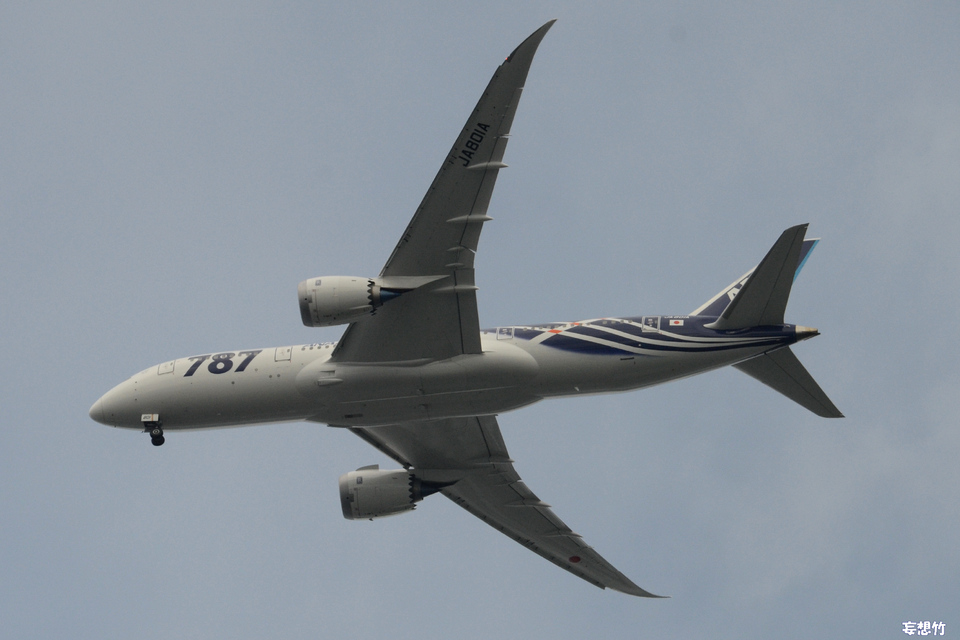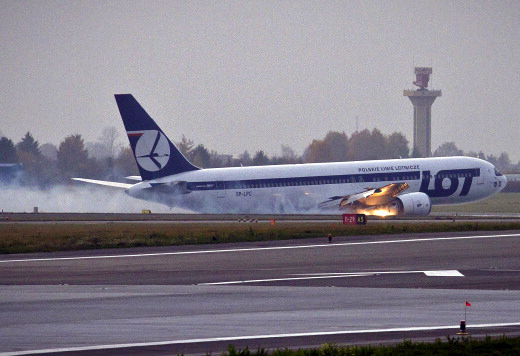Boeing's Problematic Weekend
On September 25th 2011, Boeing Commercial Airplanes delivered the first Boeing 787-8 Dreamliner to All Nippon Airlines (ANA) of Japan. The 787-8 is a modern, highly technical aircraft designed to replace the 30-year-old Boeing 767. This week, both the ageing 767, and the all-new 787-8 suffered gear problems. And one landed with gear still stowed and 230 people on board.
Frederic Chopin International Airport, Warsaw. 1st November 2011
Polish media reported that a Boeing 767-300ER with 230 people on board had declared an emergency and would be landing without landing gear or flaps. Through the magic of television this was broadcast while the aircraft was still airborne. The aeroplane belongs to Polish airline, LOT, and carries the registration SP-LPC.
With flaps up, a fully-loaded 763ER - like this one coming from New York's Newark airport, needs to land at around 130 knots or 150mph. Once on the ground, the aircraft would have its wings and tailplane to control its direction of travel but only for so long. Below 100 knots the authority of aerodynamic flight controls is reduced. Without wanting to take on the sensationalist tone that print and TV media always do when it comes to anything aviation-related, this could have gone a lot worse.
"What ifs" always start flying around in this situation. What if one engine touches down before the other? Well, yes, the engines touch the ground first (and/or the tail) when performing a gear-up landing in any modern airliners whose engines are situated in pods under the wings, and if one touches first, then it could cause the aircraft to spin. Once spinning, all manner of nasty things might happen. However, at that speed, the aircraft is still flying and is aerodynamically stable. The rudder still maintains a lot of authority, so even if one engine nacelle touches the runway first, chances are that the sheer inertia of the aircraft and with a 150mph laminar flow over a large vertical tail fin means the aircraft isn't going anywhere in a hurry. The pilots will have time to land the other engine before things get dangerous.
Non-aviation people rarely understand the margins for error with commercial aviation are huge.
What if the aircraft catches fire when it grinds along the runway? Again, that's a possibility. The friction created by a 100 metric tonne aircraft sliding across a surface that is grooved in such a way as to disperse standing water and improve braking efficiency is immense. The energy is primarily heat. But this wouldn't be the first time a Boeing 767 fuselage has slid its way to a stop on a runway. On July 23rd, 1983, an Air Canada Boeing 767-200 (registration C-GAUN) ran out of fuel at 41,000ft and landed on a disused airfield. On landing, the nosegear collapsed (it hadn't locked properly) and the aircraft slid to a stop resting on its forebelly. In that event, there was a small fire, which was quickly put out because the disused airfield was actually being used for a racing circuit that day and there was fire-fighting equipment available. That's the story of the Gimli Glider, it's worth a read.
In the case of the LOT 767, there was also a small, contained fire. It was quickly extinguished and nobody was hurt.
I could go on with the What Ifs, but I wont because you've already seen the news and you know it didn't end in tragedy. In fact, it ended with one of the best landings I've seen (with and without landing gear). Although, pilots do tend to put their birds down softer when they don't have their legs extended...
Enormous amounts of kudos to Captain Tadeusz Wrona and his crew for an amazing landing. Also kudos to the airport's emergency people who dealt with the very unusual situation so efficiently.
Now it's up to the airline's insurance company if the 767 involved will be repaired and fly again. It's about 14 and a half years old so it may be written off. But I'm not out of Rich's Magical Kudos points yet. Landing on a runway at 150mph without your landing gear doesn't automatically render a modern airliner useful only for Coke cans; my last chunk of kudos goes to Boeing because such a landing will wreck the underside of the plane, but it wont wreck it for good. It is logistically and technically viable to repair. As a plane-nut, I really hope it is financially too.
9AM (local), 6th November 2011, Okayama, Japan
Boeing's brand new pride and joy stepped into revenue service nearly two weeks ago (Wed 26th October, 2011) with Japanese airline, All Nippon Airlines. A quantum leap in technology from its predecessors, made from 50% advanced composite materials, all-electrical engine-start (typically, this is done with air) and with highly-flexible wings for minimal drag.
But that didn't stop teething problems occuring as it approached Okayama airport at the weekend because the pilots didn't get the "gear down and locked" notification that they were expecting. After some testing, they flew past the airport and asked the tower to take a look:

Fortunately, shortly thereafter, the pilots operated the backup gear extension system which worked, and the aircraft landed safely.
As a precaution, and not lacking in irony, the return flight was operated by a 767-300ER.
But probably not a LOT 767.

Comments...